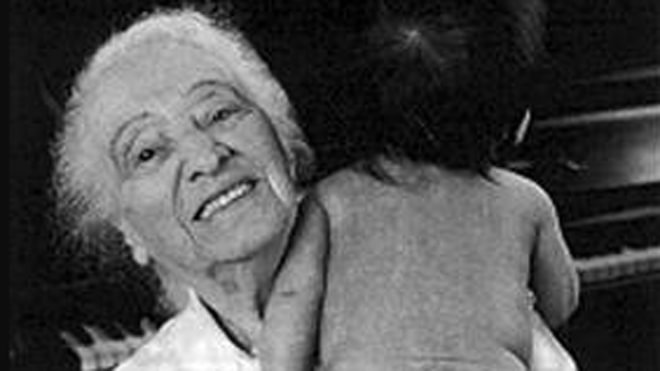
While Elisabeth Bing may not seem like a household name, every parent who gave birth to a child over the last 50+ years, whether they realized it or not, is familiar with her work. See, Bing’s life’s work was helping to bring natural childbirth into the mainstream in the United States. She died Friday at her home in Manhattan at the age of 100.
A pioneer back 1950s known as “The Mother of Lamaze,” Bing helped start a national movement through her exploration of natural childbirth methods that changed one of life’s most beautiful experiences for both mom and baby.
Her methods, today, are commonplace: Expectant parents interested in natural childbirth go to classes to learn breathing and relaxation techniques in an effort to develop those skills and ease the stress of labor. Natural childbirth aim to eliminate unnecessary intervention, such as anesthesia. It has had a tremendous benefit, not only in improving vaginal births, but also in making the bonding process quite unique, allowing mother and the partner into an experience that they will always cherish, free of drugs and surgery.
Through her work Bing explored different techniques that were being developed abroad, from Dr. Ferdinand Lamaze, a French obstetrician responsible for the Lamaze breathing technique, as well as Dr. Grantly Dick-Read, a British obstetrician and pioneer of the natural childbirth movement, who published influential books like “Natural Childbirth” in 1933, and “Revelation of Childbirth” in 1942.
Bing’s goal, however, was not to lead a crusade against the use of drugs during childbirth, but rather to empower women to make informed decisions about their birthing experience. Over the years, she educated obstetricians in natural childbirth methods, led classes for expectant parents and co-founded the non-profit Lamaze International.
One of the hospitals Bing worked with was Mount Sinai Hospital in New York City, which happens to be where I received my high-risk obstetrical education – a medical institution whose traditions in the obstetrics and gynecology department make me very proud to be a part of.
So, I salute you, Elisabeth Bing, one of the pillars of modern obstetrics. Even though you’re gone, your legacy will live on in one of the most incredible human experiences: how children enter the world.
